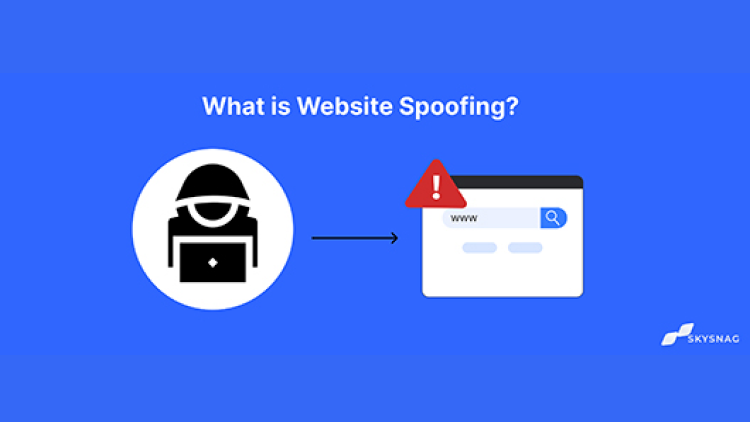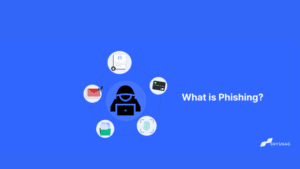What is Website Spoofing?

Have you ever visited a well-known brand’s website and felt that something wasn’t quite, right? Maybe the grammar was wrong or the user interface felt antiquated. That may have been a different website entirely. It’s possible that you were browsing a fake website.
In this article, we will be discussing what domain spoofing is and most importantly how to protect yourself. Let’s dive right in:
What is website spoofing?
Website spoofing is a scam in which cyber criminals establish a website that closely resembles a trusted brand as well as a domain that is almost identical to a company’s web domain. The aim is frequently to obtain personally identifying information about site visitors, such as login credentials, Social Security numbers, credit card details, or bank account numbers.
How does website spoofing work?
Scammers disguise their website’s identity as something else in order to harm unsuspecting online visitors.
After falling for a faked website, the user will most likely carry on with their typical activities without hesitation. This can entail providing a username and password or credit card details, which is exactly what the scammer is after.
Even though you might assume everything is going as usual, the website is actually recording the data you enter. The scammer then uses your login information to access the fake website or any other website that uses the same username and password. Alternately, they may have kept the details of your credit card and used them to make purchases on your money.
Learn more on techniques for browsing the internet safely.
What is the difference between website spoofing vs. email spoofing?
A website spoofing attack employs a fake domain name and phony website to steal information, money, and identities, whereas an email spoofing attack uses a fake email domain to make a message appear to be from a reliable source. Cybercriminals frequently run coordinated campaigns that combine email and website spoofing to trick people into clicking on a link in an email that leads them to a fake website.
How to identify a Spoofed Website
View the URL.
Website spoofers’ most common tactic is to create URLs that are nearly perfect copies of legitimate websites. By accidentally pressing the wrong key or by failing to carefully read the URL before clicking through, users might fall prey to a fake website.
Verify the SSL certificate.
Every website visitor has an additional layer of protection thanks to Secure Sockets Layers (SSL). An encrypted link that prevents disclosure without your consent safeguards your sensitive information. It is often represented by a lock or green icon next to the URL.
Verify that the domain corresponds to the SSL certificate.
The SSL for the website is created by a third party, therefore double-check the certificate by comparing it to the URL. To confirm its security, click the SSL emblem. When a certificate is granted to a website that is not the domain listed in the URL, something is off and the certificate shouldn’t be trusted. That could be a fake URL.
Do not click on weird links.
Because fraudsters’ methods are constantly changing, you can’t always rely on your own eyes and judgment. The best defense against a malicious link is to never click it at all. Enter the domain name by hand into your browser to improve your chances of getting to the correct website.
How to protect yourself from website spoofing
Do not open attachments or links in emails.
It’s customary online etiquette to avoid clicking on unidentified links. In any case, it is advisable to not click the link since there is a possibility that the email did not come from the alleged sender.
Search URLs manually
Manually look up the URL if you need to access a page that isn’t already bookmarked. By doing this, the possibility of a malicious link infecting your device is reduced. Make sure the URL is typed correctly to avoid failing to access the desired page.
DMARC Enforcement
Skysnag automates DMARC, allowing domain owners to protect their domain(s) from unauthorized use by fighting phishing, spoofing and Business Email Compromise.
Create a Skysnag account here to generate your DMARC record
Conclusion
Skysnag’s automated DMARC solution strengthens protection against phishing and spoofing attacks by confirming the legitimacy of a domain. Skysnag generates DMARC reports for you that aid in investigating potential security problems and identifying potential risks from spoofing attacks. Get started with Skysnag and sign up using this link.




